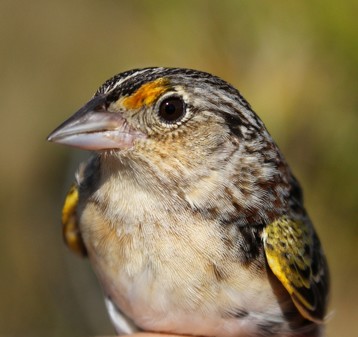 The Green Anole is the WildQuest 2023 mascot. Look for it at home or while playing WildQuest!
April 28 through May 7, 2023, the Florida Fish and Wildlife Conservation Commission is hosting the third annual Florida WildQuest, a unique scavenger hunt experience on Wildlife Management Areas throughout the state. Florida residents and visitors are encouraged to grab their phone and join a wild adventure with missions designed to help them discover some of Florida’s best spots to see wildlife and enjoy the outdoors. WildQuest players of all ages will have opportunities to learn about and explore Florida’s extensive WMA system during the event. Qualifying players will be entered in a random drawing to win wilderness-inspired prizes. Visit www.FloridaWildQuest.com to learn more, and join the WildQuest Facebook event to get player tips and updates!
 Wood storks and White Ibis fly over Three Lakes Wildlife Managment Area.
Three Lakes Wildlife Management Area is an ideal destination for birders who want to explore. Pack snacks and water to visit this expansive location in Osceola County, where you can see many of the over 200 bird species recorded on-site. Visitors can hike or bike the thirty-nine miles of multiuse scenic trails or explore via the 10-mile driving loop. Look for favorites like Northern Bobwhite, Crested Caracara and rarities like the White-Tailed Kite. The end of the driving loop goes right by a stand of Red-cockaded Woodpecker nest trees, marked with a band of white paint. Watch for the birds at dawn and dusk when they are most active. Don’t forget to keep a distance of at least 70-80 feet from the nest trees to avoid disturbing these endangered birds, particularly during the April to July nesting period. Also, watch for Bald Eagles, as this WMA is part of the highest concentration of nesting Bald Eagles in the United States. Watch for other wildlife like White-tailed Deer, Southern Fox Squirrels and Gopher Tortoises.
Visitors should note that a small permit fee is required to enter this area. Learn more about Three Lakes WMA on our website.
 A Florida Grasshopper Sparrow.
Three Lakes Wildlife Management Area protects a substantial portion of Florida’s largest remaining dry prairies, making it a perfect home for the Florida Grasshopper Sparrow. First described in the early 1900s, these rare, small birds are found nowhere else but in south-central Florida. They inhabit large treeless grasslands where they can find food in bare patches of ground between low shrubs, grasses and saw palmetto. However, much of the state’s prairie grasslands have been damaged or lost to land conversion for agricultural use, habitat fragmentation, and fire suppression that allows trees to replace the grasslands the sparrows need. As a result, Florida Grasshopper Sparrows have suffered severe population declines leading to their classification as an endangered subspecies. In 2018, their population was estimated at only twenty-three breeding wild pairs, an all-time low.
Three Lakes WMA is one of the last places that Florida Grasshopper Sparrows can live and thrive. The Florida Fish and Wildlife Conservation Commission carefully manages the site to make sure it stays prime sparrow habitat. Land managers use prescribed fire, tree removal and mowing to maintain and improve the dry prairie habitat for sparrow conservation. Their hard work is paying off. Three Lakes WMA was the first site to receive captive-bred Florida Grasshopper Sparrows as part of a large-scale conservation effort by state, federal and NGO partners. Since 2019, 464 captive-bred sparrows have been released onto the WMA, and the population on this area has grown by 124%. However, Florida Grasshopper Sparrow populations still need to be larger to be secure.
The best way to observe the sparrows is to listen for them while driving through the WMA. Birders who want to see them should do so from a distance using binoculars or a spotting scope. It is important to remember that any kind of disturbance could affect the nesting and feeding behaviors of this federally endangered sub-species. Birders should also note that the Eastern Grasshopper Sparrow visits the site during winter and is very difficult to tell apart from the Florida Grasshopper Sparrow. However, the Eastern Grasshopper Sparrow returns to Georgia during the breeding season, while the Florida Grasshopper Sparrow is present all year.
Learn more about Florida Grasshopper Sparrows here.
|